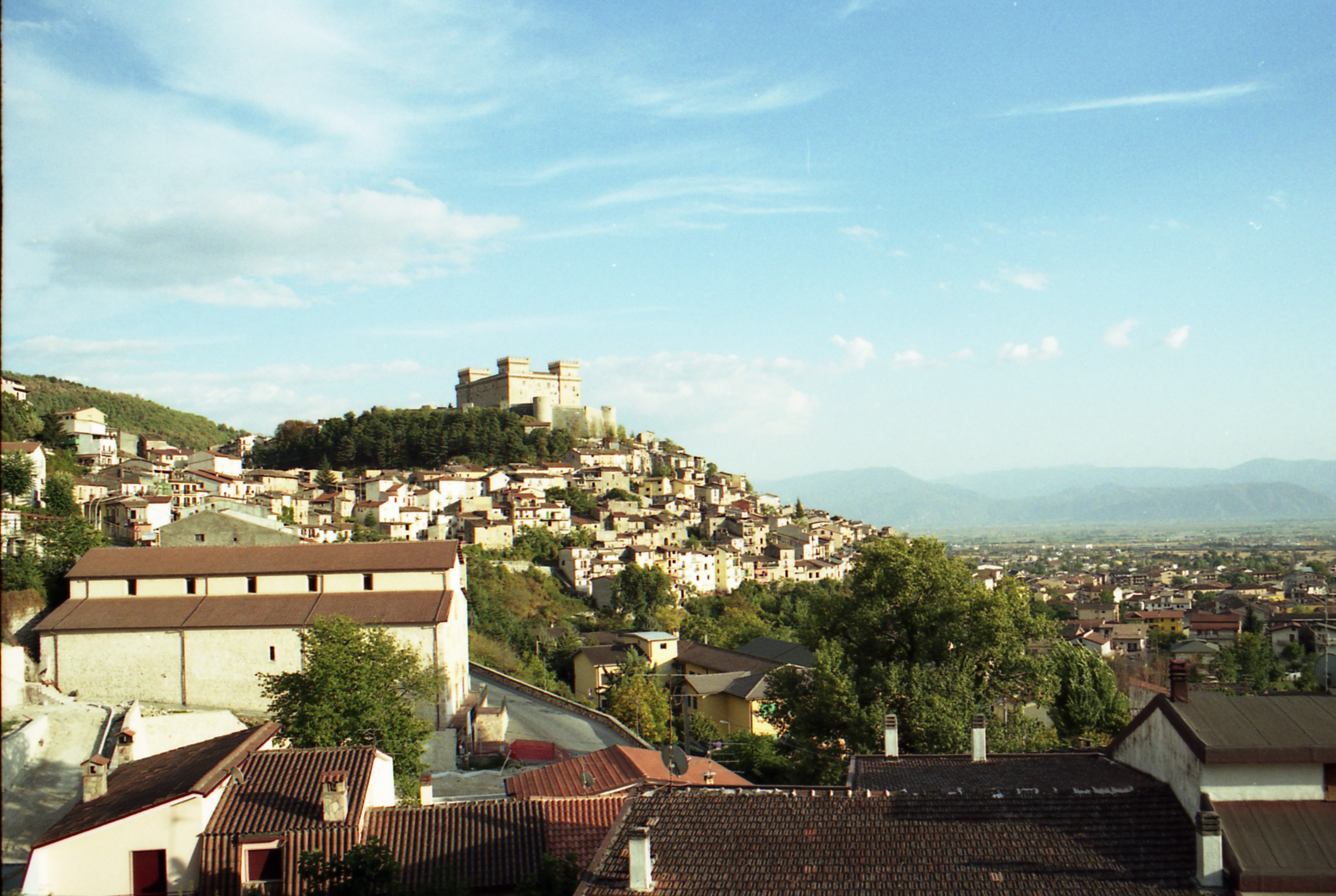|
Castello Piccolomini (Celano)
Castello Piccolomini (Italian for ''Piccolomini castle'') is a castle in Celano, Province of L'Aquila The Province of L'Aquila ( it, Provincia dell'Aquila) is the largest, most mountainous and least densely populated province of the Abruzzo region of Central Italy. It comprises about half the landmass of Abruzzo and occupies the western part of ... ( Abruzzo). History The building of the castle took place in several stages. In 1392 Pietro De' Berardi built the walls of the castle and the first two floors of the building. In 1451 Leonello Acclozamora built the main floor and the four towers at the corners. In 1463 Antonio Todeschini Piccolomini completed the building as seen today, with an open gallery in the second floor of the courtyard and improvements in the walls around the castle. The following families succeeded in the castle (like Sforza-Cesarini and Dragonetti) didn't change further the structure of the building. A deep restoration took place since 1940, put on ho ... [...More Info...] [...Related Items...] OR: [Wikipedia] [Google] [Baidu] |
Celano
Celano is a town and ''comune'' in the Province of L'Aquila, central Italy, east of Rome by rail. Geography Celano rises on the top of a hill in the territory of Marsica, below the mountain range of Sirente. It faces the valley of Fucino, once filled by the large Fucine Lake, which was drained during the 19th century. History After the fall of the Western Roman Empire, Celano suffered from the invasions of Lombards (6th century). The city passed under Byzantine control, and was then subdued by the Lombards and governed by the duchies of Spoleto and Benevento. From the 8th century, Charlemagne and his descendants ruled the Marsica region independently of Spoleto, raising it to the rank of county. Celano was elected ''Caput Marsorum'' (capital city of the Marsica region), governed by the Berardi family. From around the year 1140, it was captured by the Normans, who annexed it to the Kingdom of Sicily. Fearing that Marsica was becoming too powerful, in the year 1223 Em ... [...More Info...] [...Related Items...] OR: [Wikipedia] [Google] [Baidu] |
Italian Language
Italian (''italiano'' or ) is a Romance language of the Indo-European language family that evolved from the Vulgar Latin of the Roman Empire. Together with Sardinian, Italian is the least divergent language from Latin. Spoken by about 85 million people (2022), Italian is an official language in Italy, Switzerland ( Ticino and the Grisons), San Marino, and Vatican City. It has an official minority status in western Istria (Croatia and Slovenia). Italian is also spoken by large immigrant and expatriate communities in the Americas and Australia.Ethnologue report for language code:ita (Italy) – Gordon, Raymond G., Jr. (ed.), 2005. Ethnologue: Languages of the World, Fifteenth edition. Dallas, Tex.: SIL International. Online version ... [...More Info...] [...Related Items...] OR: [Wikipedia] [Google] [Baidu] |
Province Of L'Aquila
The Province of L'Aquila ( it, Provincia dell'Aquila) is the largest, most mountainous and least densely populated province of the Abruzzo region of Central Italy. It comprises about half the landmass of Abruzzo and occupies the western part of the region. It has borders with the provinces of Teramo to the north, Pescara and Chieti to the east, Isernia (in Molise region) to the south and Frosinone, Rome and Rieti (in Lazio region) to the west. Its capital is the city of L'Aquila. The province of L'Aquila includes the highest mountains of the Apennines (Gran Sasso, Maiella and Velino-Sirente), their highest peak, Corno Grande, the high plain of Campo Imperatore, and Europe's southernmost glacier, the Calderone. The province's major rivers are the Aterno-Pescara, Sangro, Liri, Salto, and the Turano; its major lakes are Lago Scanno and Lago Barrea. It once included the largest lake on the Italian peninsula, Lago Fucino, which was drained in one of the 19th century's largest ... [...More Info...] [...Related Items...] OR: [Wikipedia] [Google] [Baidu] |
Abruzzo
, population_note = , population_blank1_title = , population_blank1 = , demographics_type1 = , demographics1_footnotes = , demographics1_title1 = , demographics1_info1 = , demographics1_title2 = , demographics1_info2 = , demographics1_title3 = , demographics1_info3 = , timezone1 = CET , utc_offset1 = +1 , timezone1_DST = CEST , utc_offset1_DST = +2 , postal_code_type = , postal_code = , area_code_type = ISO 3166 code , area_code = IT-65 , blank_name_sec1 = GDP (nominal) , blank_info_sec1 = €33.9 billion (2018) , blank1_name_sec1 = GDP per capita , blank1_info_sec1 = €25,800 (2018) , blank2_name_sec1 ... [...More Info...] [...Related Items...] OR: [Wikipedia] [Google] [Baidu] |
Castles In Abruzzo
A castle is a type of fortified structure built during the Middle Ages predominantly by the nobility or royalty and by military orders. Scholars debate the scope of the word ''castle'', but usually consider it to be the private fortified residence of a lord or noble. This is distinct from a palace, which is not fortified; from a fortress, which was not always a residence for royalty or nobility; from a ''pleasance'' which was a walled-in residence for nobility, but not adequately fortified; and from a fortified settlement, which was a public defence – though there are many similarities among these types of construction. Use of the term has varied over time and has also been applied to structures such as hill forts and 19th-20th century homes built to resemble castles. Over the approximately 900 years when genuine castles were built, they took on a great many forms with many different features, although some, such as curtain walls, arrowslits, and portcullises, were c ... [...More Info...] [...Related Items...] OR: [Wikipedia] [Google] [Baidu] |



